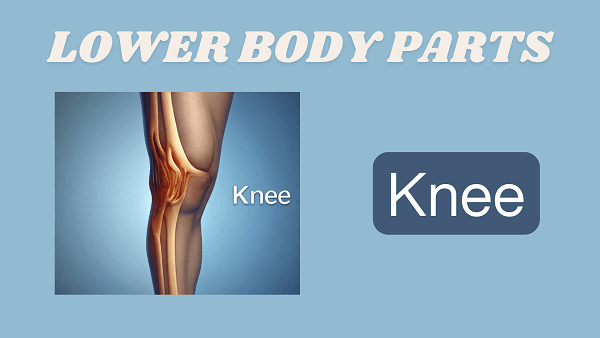
Knee | Definition, Etymology, Functions & Anatomy
Knee is the part of our leg. In Latin, it is known as the articulation genus. It is a hinge joint that assists the legs in bearing weight and also for various movements. Knees help us in standing, moving, and many more. Its joints permit extension and flexion.
Definition
Knee is the joint that joins the thigh with the lower leg.
Etymology
This word originates from the Old English cneow, cneo of Germanic origin related to Dutch knie from an Indo-European origin communal by Latin genu and Greek gonu.
Synonyms
- Articulation genus
- Hinge Joint
- Kneepan
- Genu
- Ginglymus
Functions
It supports the body in a straight position, not including the need for muscles to work. It gives stability and assists in lowering and lifting the body. The knees act as a shock absorber and allow the twisting of the legs. Also, it makes walking more efficient. Their basic function is any kind of movement or motion such as:
- Cycling
- Walking
- Running
- Swimming
Anatomy of Knee
The joint of the knee has two articulations which are:
- Tibiofemoral Joint
- Patellofemoral Joint
Some of the detailed information about the knee is:
Bones:
The three bones in the knee are:
Femur: It is the thigh bone.
Tibia: It is the shin bone.
Patella: This bone is the kneecap.
Muscles:
The two muscle groups in the knees are:
- Hamstrings
- Quadriceps
Hamstrings:
These are the 3 muscles that bend the knees.
Quadriceps:
These are the 4 muscles that straighten the knee.
Cartilage:
There are two types of cartilages which are:
- Articular Cartilage
- Meniscus Cartilage
Articular Cartilage:
This cartilage is on the thighbone at the peak of the shin bone and the rear of the kneecap. It is a slim and shiny layer of cartilage. This works as a shock absorber and also assists the bones to move easily over one another.
Meniscus Cartilage:
These cartilages are curved shaped discs. They act as shock absorbers so that the bones of the knees can move their range of movement with no resistance. Also, it has nerves that assist in developing equilibrium and constancy and make sure the correct weight allotment among the femur (thighbone) and tibia (shin bone).
Tendons:
These hard bands of soft tissue give constancy to the joint. In the knees, the two tendons are:
- Quadriceps Tendon
- Patellar Tendon
Quadriceps Tendon:
This tendon connects the thigh to the Kneecap (patella).
Patellar Tendon:
This tendon connects the patella to the tibia (shinbone)
Knee Pain
It is an ordinary problem in adults. It is frequently related to our daily activities like walking, bending, and standing. The players who run or play sports including jumping are more likely to the occurrence of this pain and problems.
Knee Swelling
A swelling knee is the outcome of a surplus amount of fluid collection in the joint of the knee. It can also occur due to trauma. It can be treated by:
- Rest
- Pain relievers
- By applying ice
Common Injuries
Knees are mostly injured through sports activities such as exercising or as a result of a fall. Pain, swelling, complexity with weight bearing, and unsteadiness are the general signs of knee injury.
Knee Conditions
- Arthritis
- Meniscus tear
- Osteoarthritis
- Tendinopathy
- Bursitis
- Sprain or strained
- Dislocation
- Fracture
- Overuse
- Traumatic arthritis
Examples
- Ahmad put his hand on her knees.
- I feel too much pain in my knees.
- Ali's knee is injured while playing.
- Saba suffered a severe knee injury.
- Sara's knees trembled with terror.
FAQs (Frequently Asked Questions)
Which of the muscles is behind the knee?
The Popliteus muscle is behind the knee.
Mention the three nerves in the knee.
- Tibial nerve
- Common peroneal nerve
- Saphenous nerve
How much is the size of the ligament of the knees?
Its size is between 33.0mm to 42.0mm.
Which of the foods cause the swelling in the knees?
- Sweets
- Fatty food
- Dairy
- Carbohydrates
- Gluten
- Additives
- Tobacco
- Alcohol
Which of the vitamins is good for the joints of the knees?
Glucosamine vitamin is best for knee joints.
More Related:



